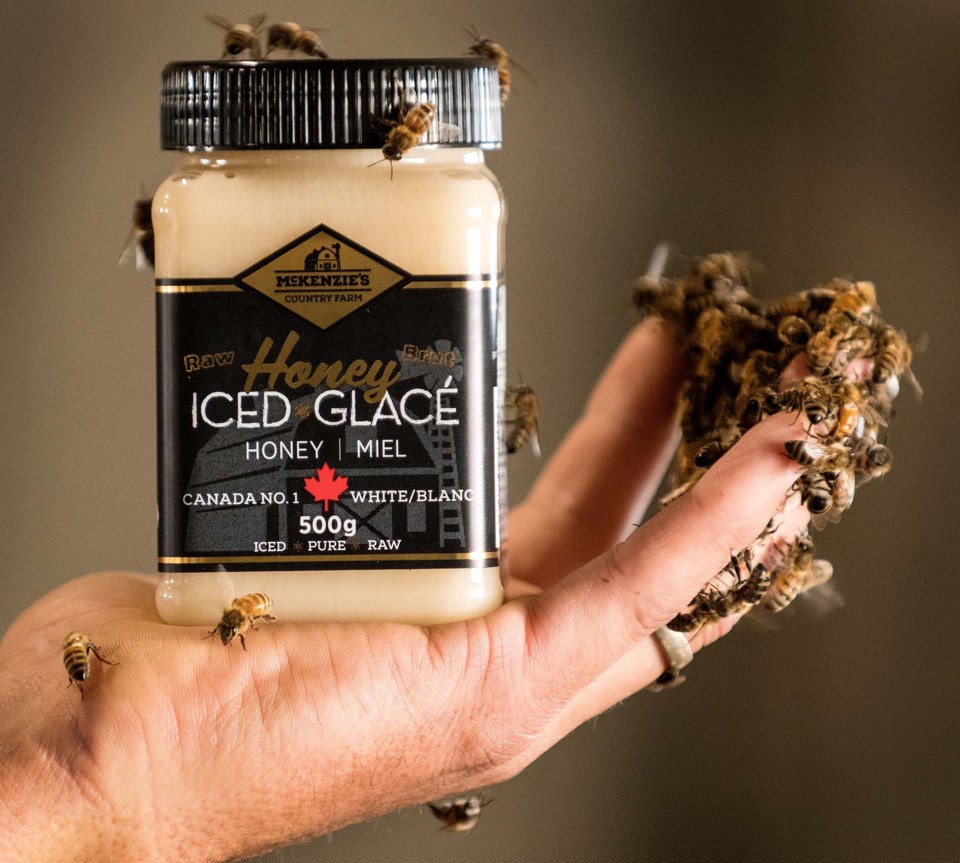A Sturgeon County bee expert will be in Edmonton next week to tell beekeepers the secrets to raising better queens.
About 100 farmers and researchers will be at Edmonton’s Holiday Inn South Feb 8-10 for the Alberta Beekeepers Commission’s annual Integrated Pest Management Workshop and Breeder’s Day. This annual conference gives beekeepers and bee researchers a chance to network and share knowledge about how to raise queens and protect their bees from pests.
Beekeepers can create stronger, more disease-resistant hives by breeding queens locally instead of importing them, said workshop co-organizer Renata Labuschagne. This year’s conference will include talks on the influence of genetics and egg size on queen production and practical tips on how to breed queens.
Henry Greidanus and Jorge Raudez will speak on how they rear queens at Sturgeon County’s Greidanus Apiaries.
Greidanus said the queen is arguably the hardest-working bee in the hive, as she gives birth to every bee in it.
“During the summer she can lay up to 2,000 eggs a day,” he said — more than twice her weight in eggs.
How to make a queen
Every beekeeper loses hives over the winter to disease and the cold, Greidanus said. To replace them, they need to split off part of a healthy hive and give it a new queen. That’s an issue in Alberta in the spring, as there aren’t any bees flying around mating. New queens have to be imported from places such as California or Australia.
A queen honeybee looks a lot like a regular one except its abdomen is about twice as big, Greidanus said. Most Alberta honeybee queens are of the Italian (orange abdomen) or Carniolan (black abdomen) breeds and live for about five years.
Honeybees make a new queen whenever the current one dies, is no longer productive, or leaves to create a new hive, Greidanus said. To do this, they take larvae previously laid by the queen, put them in extra-large queen cells, and start feeding them nothing but royal jelly — a sort of bee super-food packed with hormones and proteins. This super-rich diet turns makes the larvae grow to become queens instead of workers.
Greidanus said most hives will try to raise five or six new queens at a time, which is an issue since there’s only supposed to be one queen per hive.
“The queens will fight to the death until there’s only one left,” Greidanus said, after which the victor will go on a mating flight to collect genetic material from drones.
Greidanus said his crews create queens for new hives at his apiary by transplanting about 30 larvae into queen cells in a queen-less hive so the bees start feeding them royal jelly. It takes his crews about four hours to prepare about 240 queen cells this way. At the 10-day mark, just before the queens hatch, crews transfer each queen into a different hive so they don’t all murder each other and can run their own hives. The queens fly out to mate 10 days later so they can start laying eggs.
Greidanus encouraged beekeepers to come to the workshop to learn how to raise their own queens.
“There might be beekeepers out there who are intimidated by making queens, and I’m here to say it’s not a big deal at all. It’s simple.”
Visit www.albertabeekeepers.ca/2023-ipm for details on the workshop.



